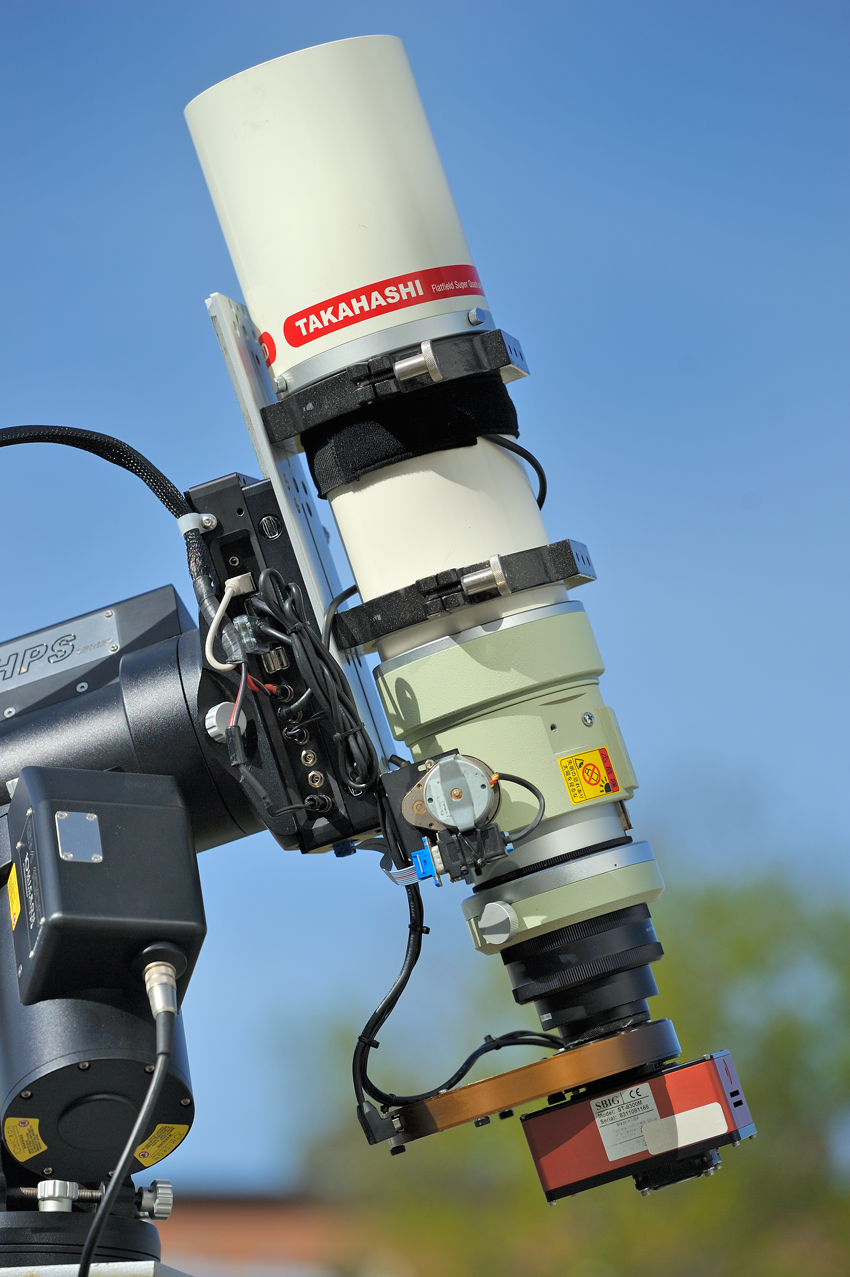Blue Astro Remote Control USB Hub
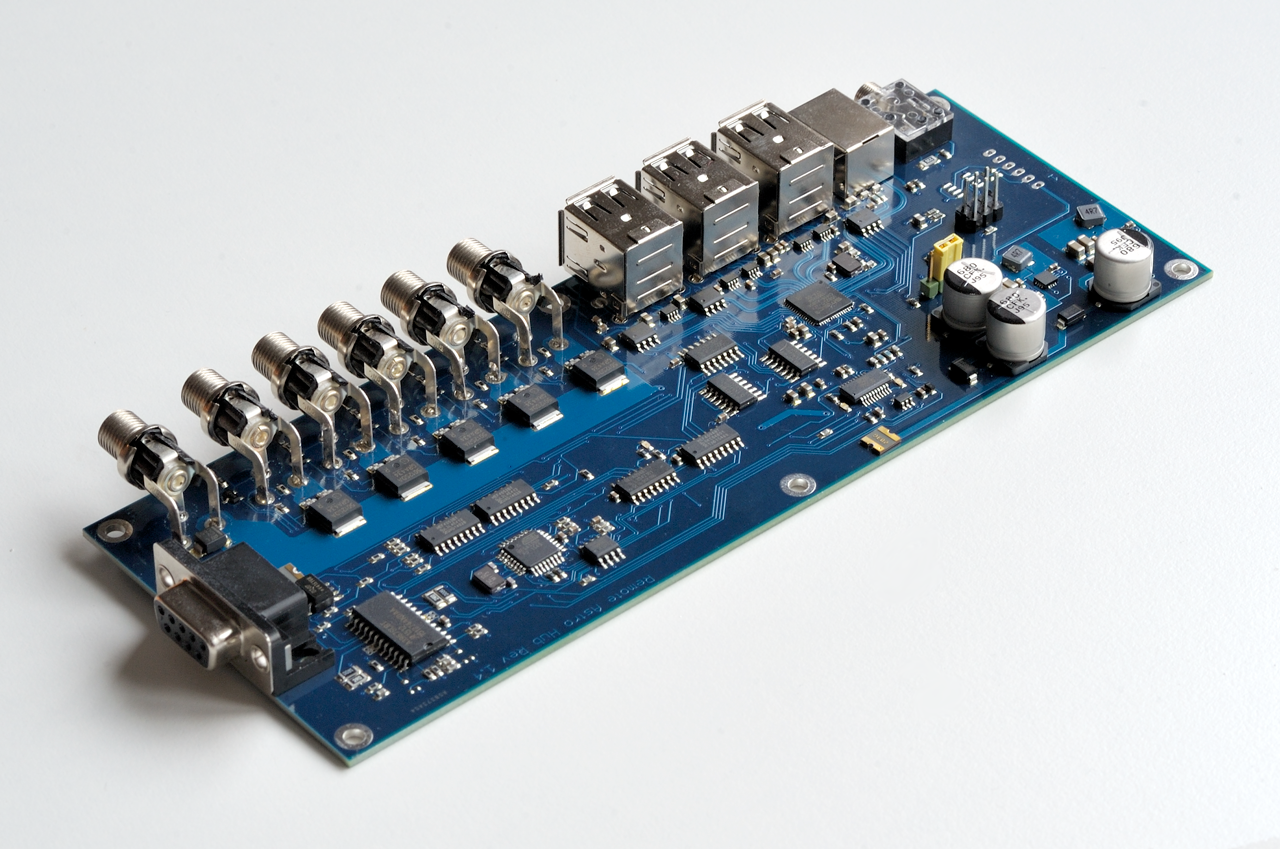
Two years of development and testing has yielded the most optimized control and connection hub that the market has seen. The Remote Control Hub features the latest technology and has full software support via ASCOM or direct firmware commands. With it you can turn your devices on and off, manage your dew heaters and — best of all — remotely fully disconnect and re-connect your USB devices.
At a glance:
- 5 12V switchable outputs, all with PWM capability for dew control
- All 12V outputs have software fuses that you set the trip point for
- Constantly measures voltage and current on 12V outputs
- Built-in 7-port USB 2.0 hub, 6 available to you
- 6 USB connectors for your equipment, five of which are remotely switchable
- USB power drain protection with full specification 500 mA per port
- Stepper driver for focus motors (bipolar)
- 2 general purpose opto-coupled outputs, one of which has built-in functionality for switching a 10Micron mount on and off
- Full ASCOM driver support, Switch and Focuser interfaces (ASCOM Platform 6.2 required). Multiple clients accepted
- ASCOM-connected control application
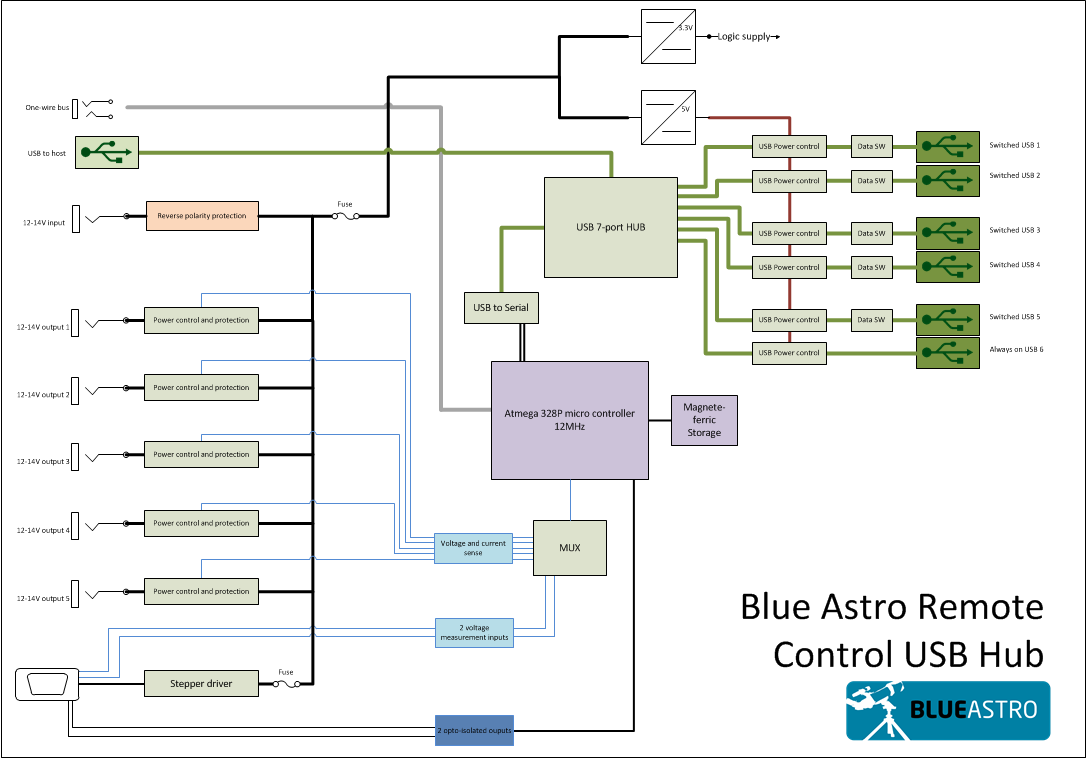
Block diagram in PDF format is available here.
12V switching outputs – steady or PWM
The Remote Control Hub is capable of switching five 12V outputs on and off, each capable of 7A of continuous current delivery. Each output can be set to act as a pulse-modulated output for dew heaters or as a standard 12V output.
12V monitoring and protection
The Control Hub continuously measures both voltage and current on each output and can be set up to trip each output at a specified current, effectively acting as “soft fuses”. Trip time is globally configurable for the device as a whole and can be set to as low as a 15 milliseconds, which is much faster than most standard fuses, and certainly many times faster than any auto-resettable fuse. In addition, the outputs are all short circuit protected on the chip level using the latest SmartFET technology. A software fuse tripped output is reset by simply turning it on again.
USB Hub
Having a powered USB Hub on your telescope is a great way of reducing the number of tangling cables and at the same time improving reliability. The Remote Control Hub features an advanced technology USB 2.0 compliant hub with six ports available for your use.
Unplug/re-plug of USB
Anyone using a telescope at a remote location is well aware of the support needed should a USB device cable need to be unplugged and then re-inserted. The Remote Control Hub remedy for this situation is completely switchable USB outputs. The Hub does not only cut the 5V feed in the USB connector to accomplish this, mainly because it doesn’t guarantee that the device resets itself properly from just that. Instead, it actually cuts both the 5V supply and the two data wires by means of high bandwidth switching devices, all without compromising USB signal integrity.
Five of the six USB ports can be switched in this manner from software control, while the sixth is always ON. Having one set to always on means that a device critical for complete system startup success can be available at all times, and more specifically right from the start even before the Remote Control Hub has booted and had time to turn on any devices.
Startup behavior
Each of the 12V switchable outputs and each of the five switchable USB ports can be configured to ON, OFF or last state upon Remote Control Hub start-up. This way you can configure everything to suit your startup and recovery from total power loss situations.
Focus motor driver
Embedded in the Remote Control Hub is a high performance bipolar stepper motor driver capable of driving most auto-focus motors on the astro equipment market. Focus motors are driven according to standard stepper motor specifications with a voltage equal to that of the main feed to the Hub. For high accuracy situations, it can be programmed for 2, 4 and 8x micro stepping with or without motor hold.
Additionally, the focus motor logic can be set to step at 1 ms to 250 ms intervals between steps accommodating most stepper technologies. Stepping occurs with high timing accuracy so that steppers driven at high speeds do not miss steps.
Stepper motors are connected by means of a standard DB-9 male connector, common on many available focus motors.
Opto-isolated outputs and 10Micron mount control
The DB-9 connector for focus motors also contains two opto-isolated open collector outputs. Typically, one of these is connected to a 10Micron mount control box and facilitates switching the mount on and off. The Remote Control Hub handles the timing of the pulse needed by the mount, so the software only has to send a single command to activate it. If you don’t have a 10Micron mount, you have two outputs available for general purpose use.
Extra voltage inputs
If you have a DC/DC converter in your setup, you may want to connect its output to one of the two extra voltage measurement inputs available in the Remote Control Hub’s DB-9 connector. As shipped, the device accepts up to 32V input, and a simple two-resistor voltage divider can be used to read higher voltages as well. We can also tailor higher voltage ranges directly for a small fee.
One-wire temperature sensors
A separate 3.5 mmm standard tele jack on the Remote Control Hub is used to connect a daisy chain of up to eight low-cost temperature sensors. The sensors are detected upon Control Hub startup and can be read via firmware commands or by ASCOM Switch interface clients.
Configuration memory
A non-volatile magneto-ferrite memory device stores every configuration setting and device state within the Remote Control Hub. The memory device was chosen for its high speed and extremely high write cycle capacity, the main reason being that focuser position is written continuously so that it is not lost.
Client applications connecting to the Remote Control Hub do not need to explicitly save settings as this is handled automatically on each setting or output state change.
Communication with your computer
The USB cable connecting the Remote Control Hub to your computer also transports the communication to and from the device’s firmware. There is a seventh USB port on the internal hub device, and this port has an FTDI XS231 USB to serial converter permanently attached. The Remote Control Hub is hence seen as a standard COM-port by your computer.
Firmware
The microprocessor in the Remote Control Hub runs a firmware that manages all aspects of the device and serves client requests via USB. For those of you who like to write astronomy software yourself, the firmware protocol is fully documented in the manual.
ASCOM Compliance and Control Application for Windows
If you control your astro gear from Windows you are in luck. The Remote Control Hub is serviced by a local server ASCOM driver that exposes a Switch device and a Focuser device. Any ASCOM-compliant Windows application supporting these two interfaces can be used to control and read data from the Remote Control Hub. The drivers requires ASCOM Platform 6.2 and .NET Framework 4.
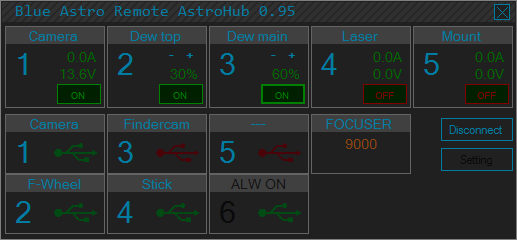
The Control Application provides status and control of most of the Remote Control Hub’s functionality, and also manages the most common settings, all in an easy to use dark graphical user interface.
Case
We offer the Control USB Hub in three versions:
- Board only
- Simple metal case
- Losmandy extension base
The Losmandy extension version features a rock-steady Losmandy bar and a Baader Planetarium Losmandy clamp. This way, you can mount your Hub under your scope and use short and neat cabling. The rigidity of the Baader Planetarium clamps is well known, so you will retain the tightness of your rig.
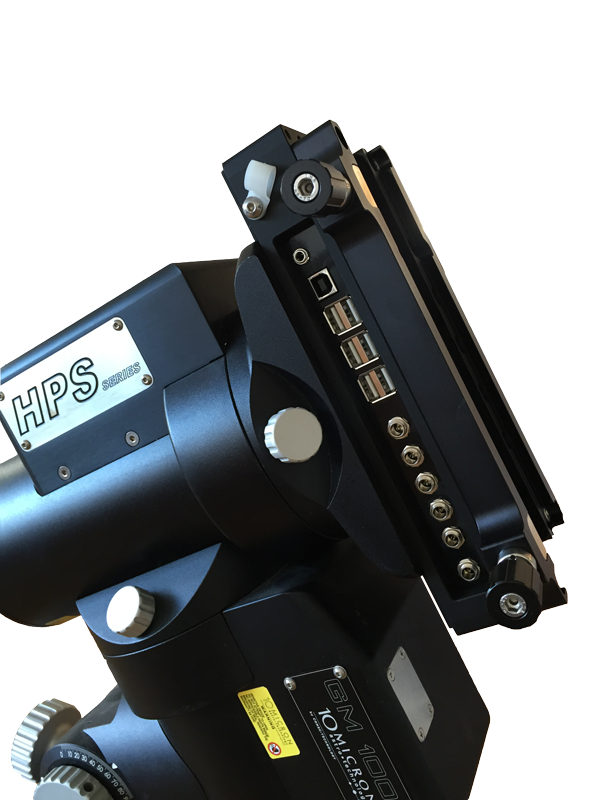
When
The first small batch of production hubs are currently being manufactured and will be verified by a team of early adopters for about a month, after which full production is scheduled to start. The product has already been through several iterations over the past two years, so we expect no glitches during early adoption testing.
How and how much
Pending final delivery, we accept notes of interest to info at blueastro dot se. The final price is not yet available, but should be ready soon. In the United States, our appointed representative is Deep Space Products (http://deepspaceproducts.com).
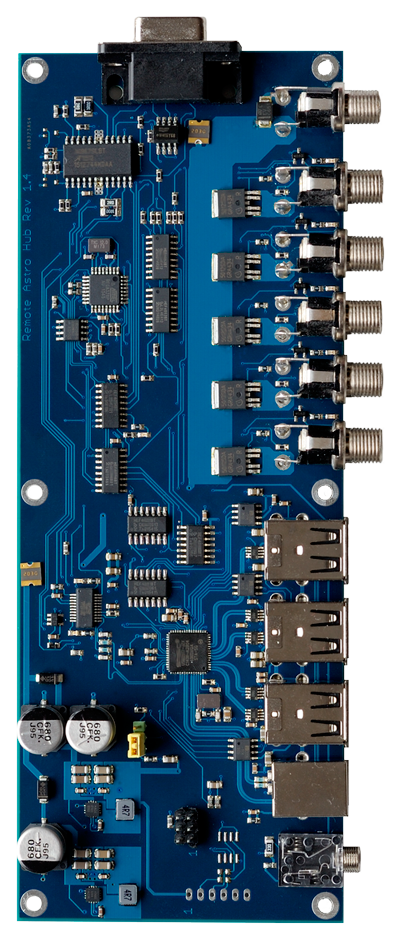
Test rig has been running for quite some time now:
